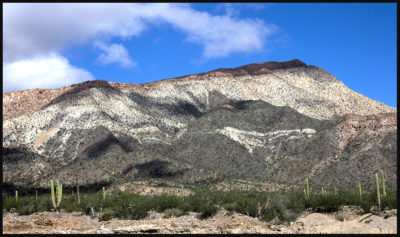
Geologic colors on way to LA Bay
We had almost no cash because the bank lines to the US were down in San Felipe, so we converted all the dollars we brought along into pesos. Gas is about $5/gallon and they only take cash. So at the south end of Valle de los Cirios we took a quick left to the Bahía de los Angeles (LA Bay), supposed to be one of the most beautiful bays on the peninsula. Not all that long ago a large sea turtle fishery sustained the town; fortunately, selling turtle meat is now illegal.
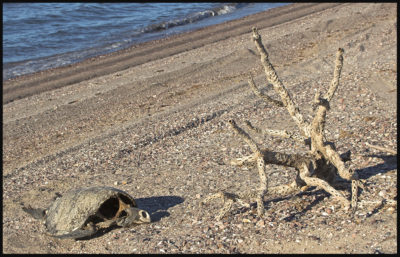
Sad end for a sea turtle
The tourists: kayakers, sport fishers, and snowbirds, keep the town alive, (although we couldn’t prove that in our brief foray). We planned to get cash and gas and see the bay before continuing. The bay itself would be lovely on a nice day, with all its picturesque offshore islands, but the wind was howling, the town something of a pit, and there was no ATM. Scraped together our dwindling peso supply to buy gas and left without even taking a picture. (FYI, the exchange rate while we were there was about 20 to $1. I think the peso is regaining some of its value now.)

Funky little port town of Santa Rosalillita
Decided to take our chances on the Pacific side (it’s not far from Gulf to ocean side). Weather was still unsettled but better and we found a clean beach area with only 2 other campers near the tiny port city of Santa Rosalillita.
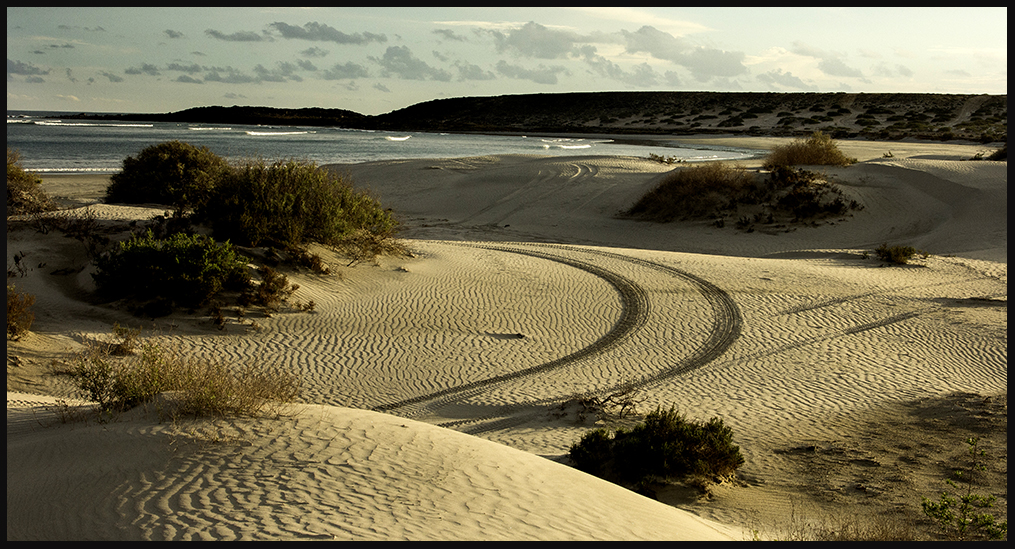
Beach north of town.
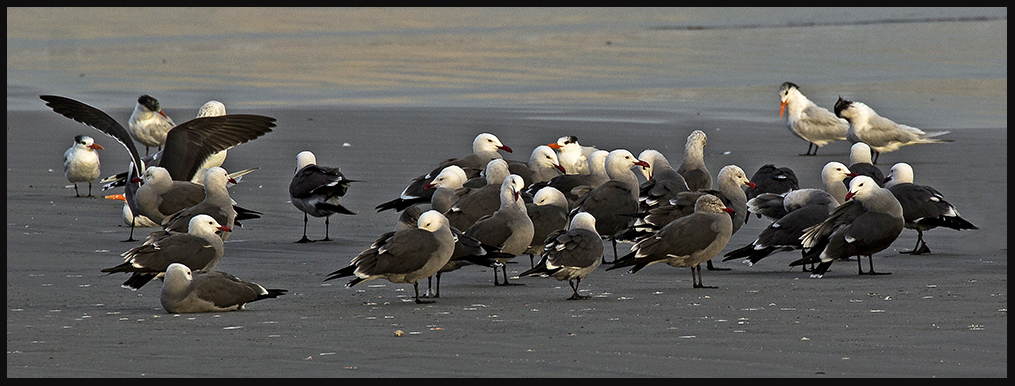
Beach mob; gulls and terns
Surfing is big on the Pacific side, and whenever surfing season is, I’m sure it’s busy. Lucky for us the season is apparently not mid-January.
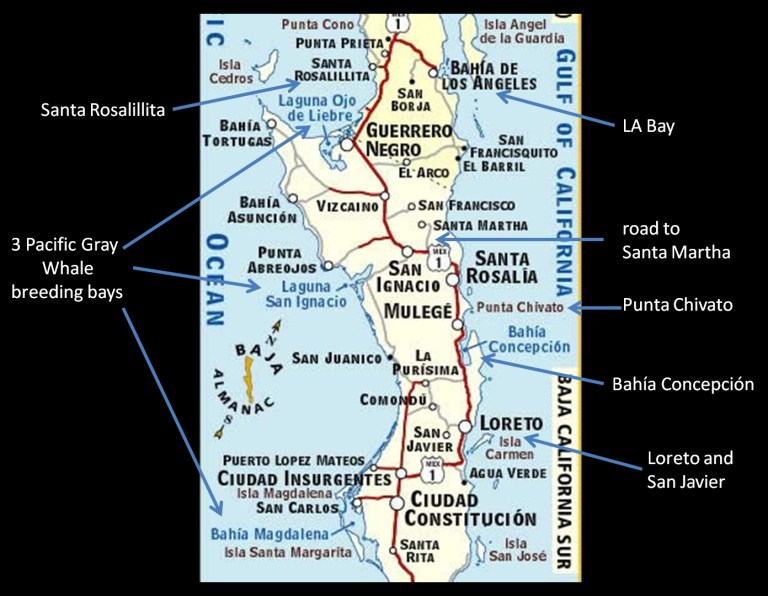
Ducked into Guerrero Negro to shower and get money, finally! It’s a good sized city on the first of only 3 bays where all the world’s Pacific Gray Whales meet for copulating and birthing. Windy and unsettled weather there too, so moved on, planning to return later.
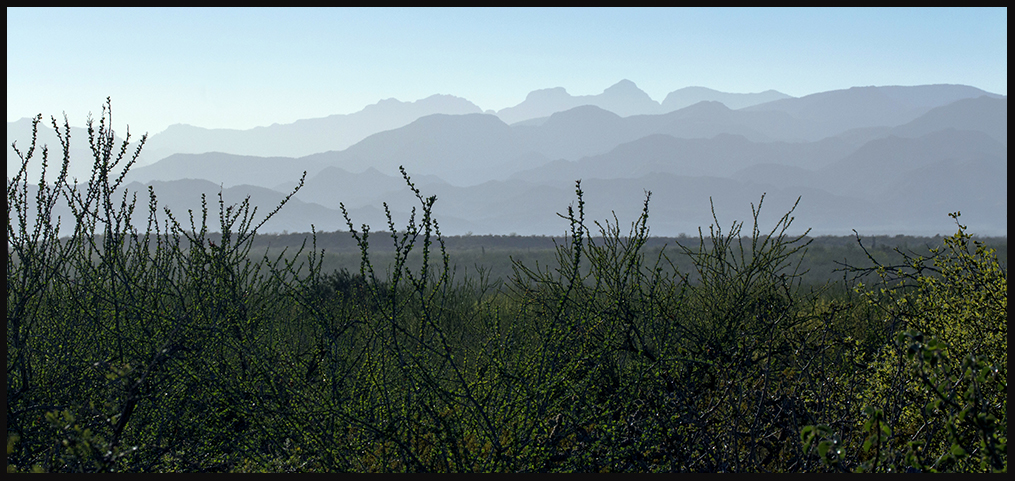
Dusty mountains near Santa Martha
Our strategy for camping is, drive and/or explore until it seems time to stop for the day, then pick a road, any road, off the main highway. Drive in far enough to be invisible from the highway, preferably out of earshot also. Find a nice, level and scenic spot and stay the night.

Camp site off the Santa Martha road.
It almost always works out fine. Many have asked if we feel safe doing this. Yes. We never had a problem and the few people we ever saw were nice. No one ever bothered us. The only issue we had were occasional pathetic dogs. Here off the road to Santa Martha a bitch and two pups found us. The dog situation in most of Latin America is sad.
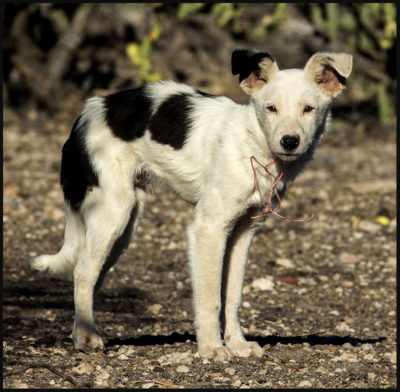
One of three camp dogs.
They readily became camp dogs and would have been happy to go with us anywhere. What’s Mexico without a few hungry, stray dogs?
Decided to find a secluded place to camp on a beach for a change. Punta Chivato looked promising on the map. The road in was suitably miserable..it seemed a good choice. Good grief, the whole coastline was private…lined with mostly empty mansions, yuk.
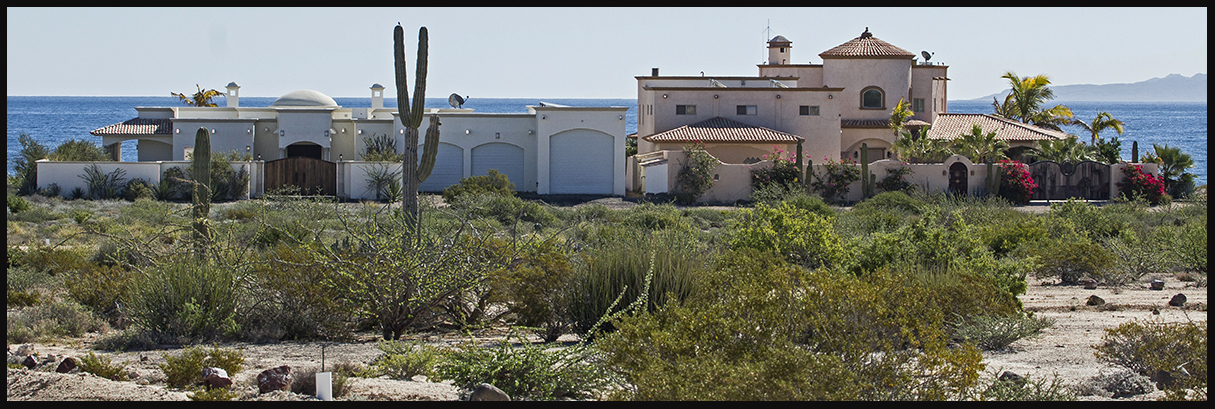
Punto Chivato enclave
Nothing to do but retreat inland for the night. We’re not sure where all the money comes from to build these mammoth enclaves…very rich Mexicans or foreign nationals or both. We heard much of the labor to build these atrocities is imported from the mainland.
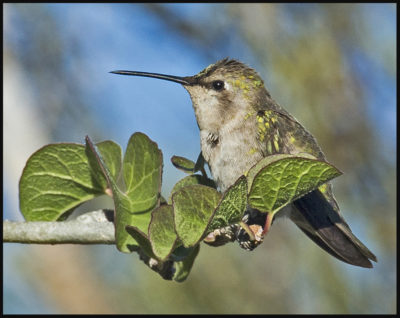
Costa’s hummingbird, female.
Costa’s hummingbirds are the main species of hummer in Baja. There are few more listed in the book, but obviously not as common. Bird life, and wildlife in general is still scarce. We hope for more as we go south.
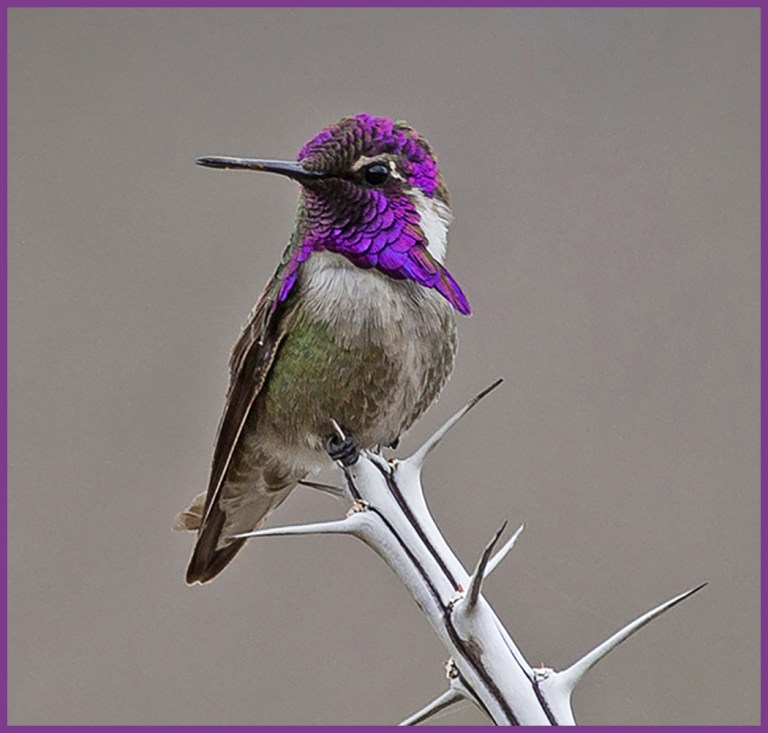
Costa’s male
Next stop, Bahía Concepción. Many gringos pull enormous RV’s down from the states and Canada. Not sure Canada has a functioning population in winter, with so many here and in southern US states.
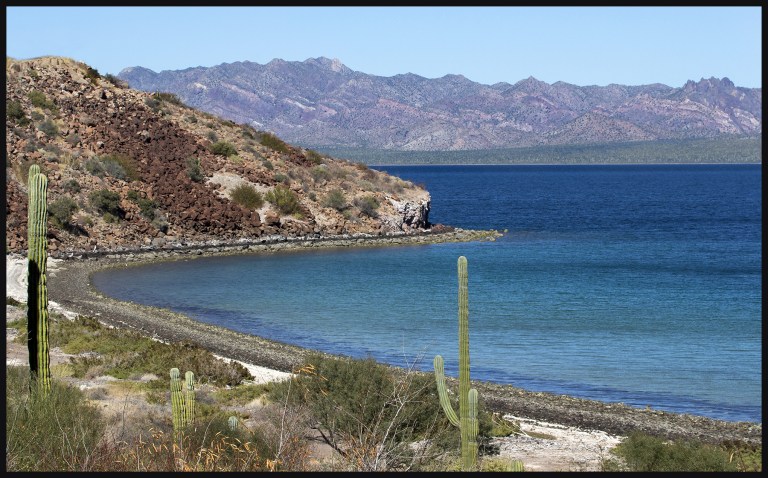
The lovely Bahía Concepción
We stayed in three different spots along the bay. The first, on the way south, was the most isolated. A bumpy road in around the south end of the bay has several miles of uninhabited beach. The road continues on to the other side of the bay, but we didn’t follow it that far.
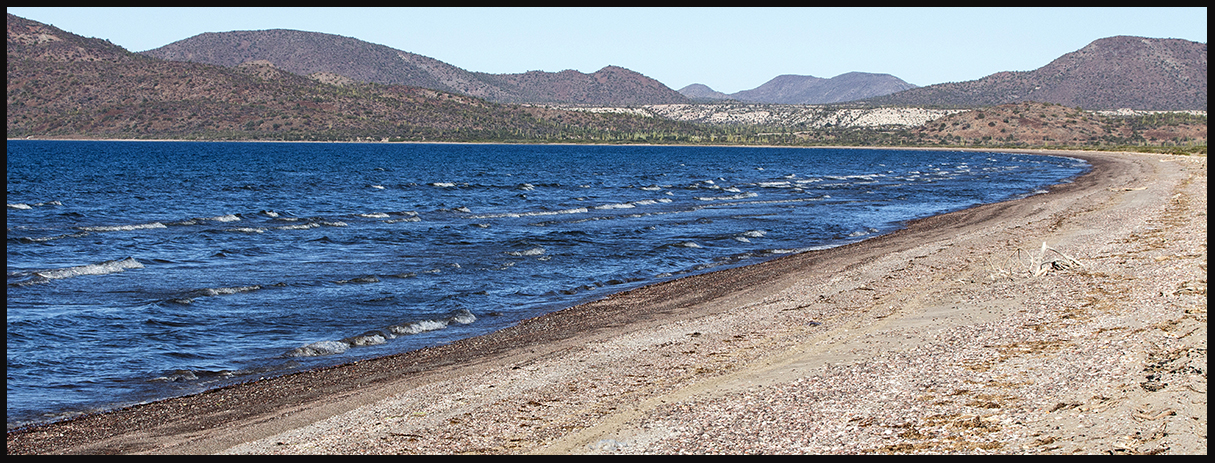
End-of-the-bay camp site.
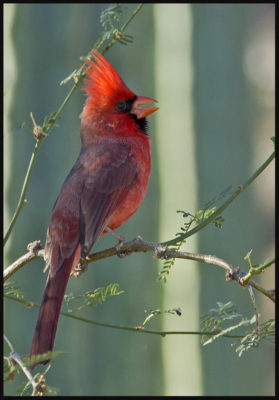
Wintering Northern Cardinal

Wintering Hooded Oriole
On the way back home we stayed at Campo el Requesón. There is an island attached to the camp at low tide. $5/night to camp with rudimentary porta-potties. We were invited to share a fresh shrimp dinner with other campers.

Sunrise at Campo Requesón
Most camps are populated by very friendly gringos. So many stay for months at a time, they are happy to hear some new stories and ogle a home-built camper. Stayed a few days at El Coyote beach and dug out the inflatable kayak to paddle out to the island. Think it was about $5 or $7/night. Again the pit toilets are nothing to write home about.
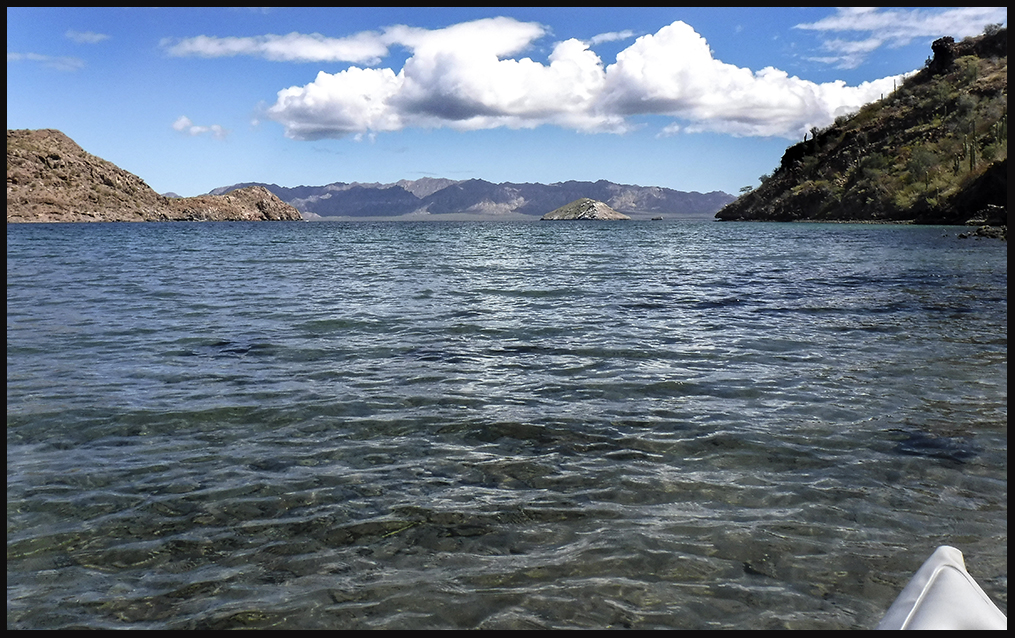
Paddling to El Coyote Island

Crown of thorns on the island.
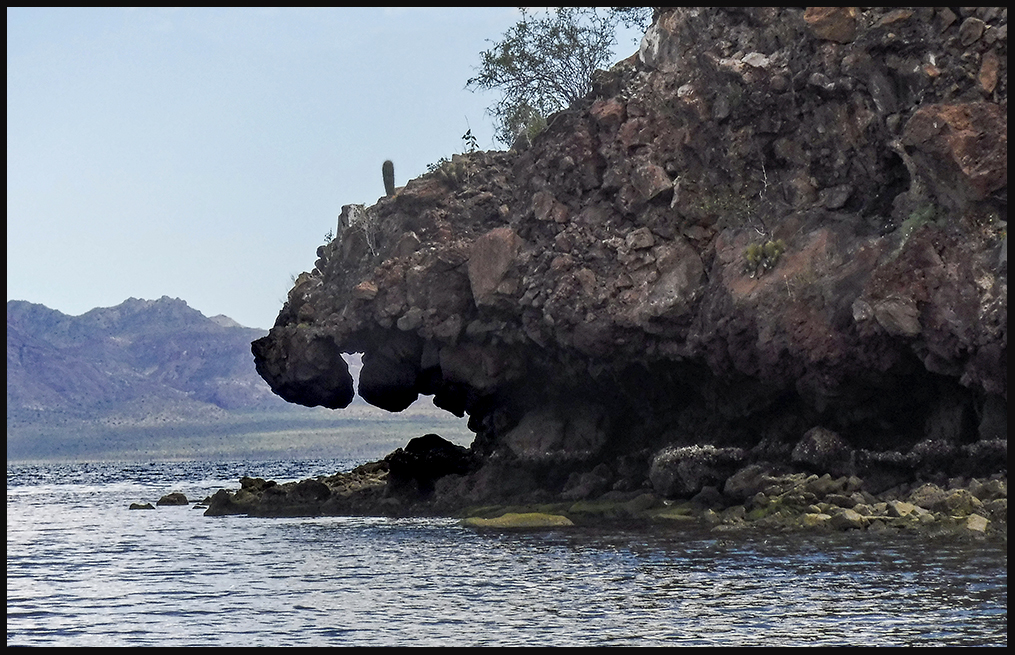
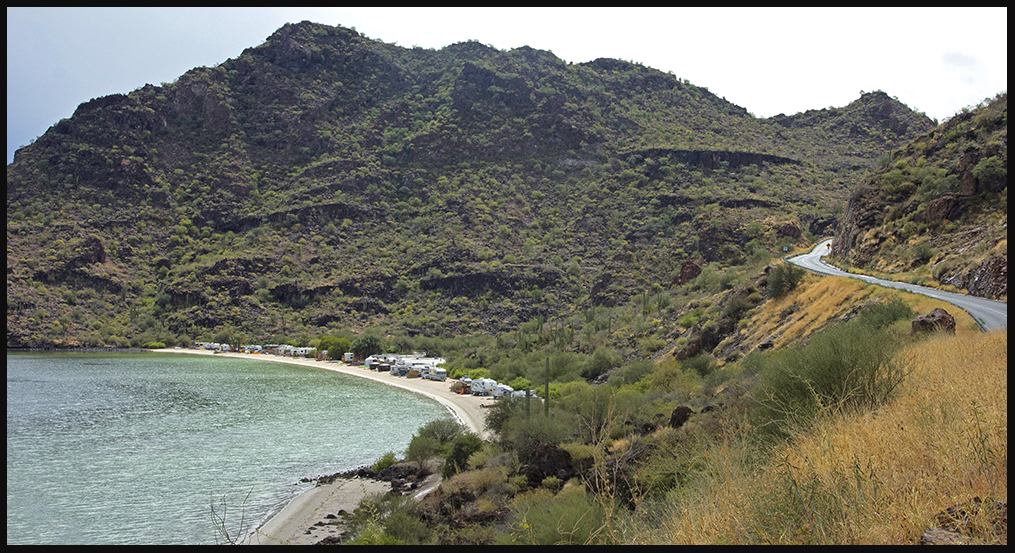
Campo El Coyote. It’s too close to the highway, but the noise wasn’t bad. Not a lot of traffic at night.
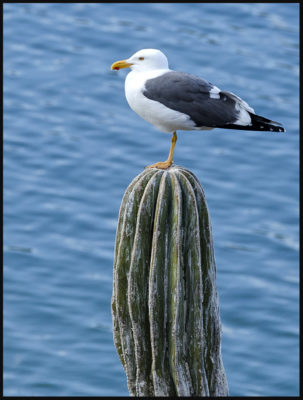
California Gull.
Next stop Loreto, in 1697 the first permanent Spanish settlement on the peninsula. Long thought to be an island, it was about 150 years after the Spanish arrived in Mexico before they bothered to explore Baja. It was the Jesuits, in search of souls to save, that made the jump to the “island”. And what a surprise. After the highly evolved civilizations they found on the mainland, on Baja the indigenous people were stone age aboriginals living as primitive hunter-gatherers. Well Jesuits like nothing better than a challenge apparently, so they roamed the arid peninsula looking for water and good dirt…suitable spots to build churches (with local labor, of course), and teach the natives the wonders of Jesus and agriculture. Despite their most tenacious efforts, only a few natives were converted, most died of introduced disease and/or hard labor. The natives got in a few licks themselves, murdering some padres and converts. Father Serra, who left Baja and began establishing missions in Upper California wrote, according to Krutch, “This collapse was due, not to failure to convert the Indians (nominally at least), but to the rapid disappearance of Indians to be converted”. One padre when asked if his efforts had been for naught said, “No”, although the adults didn’t take well to conversion, “there were some exceptions and one must consider, besides, the infants who were lucky enough to perish before they had a chance to sin. The more than 14,000 young Californians who have been sent to heaven during the last seventy years is reward enough for the effort of the missionaries”. I’m not sure the natives agreed.
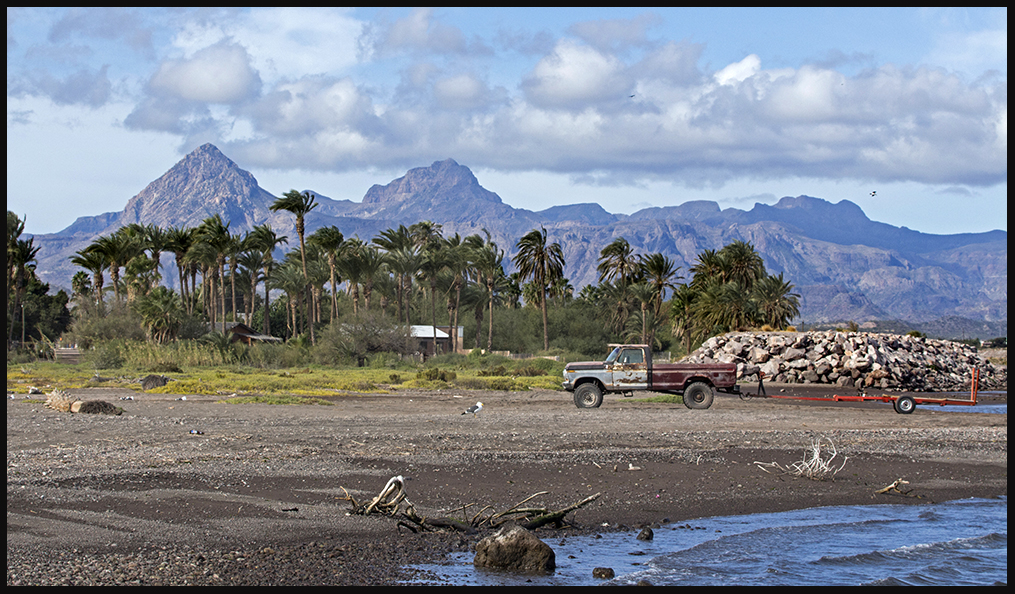
View from Loreto Bay
From that lovely story we’ll segue to Loreto Bay denizens.
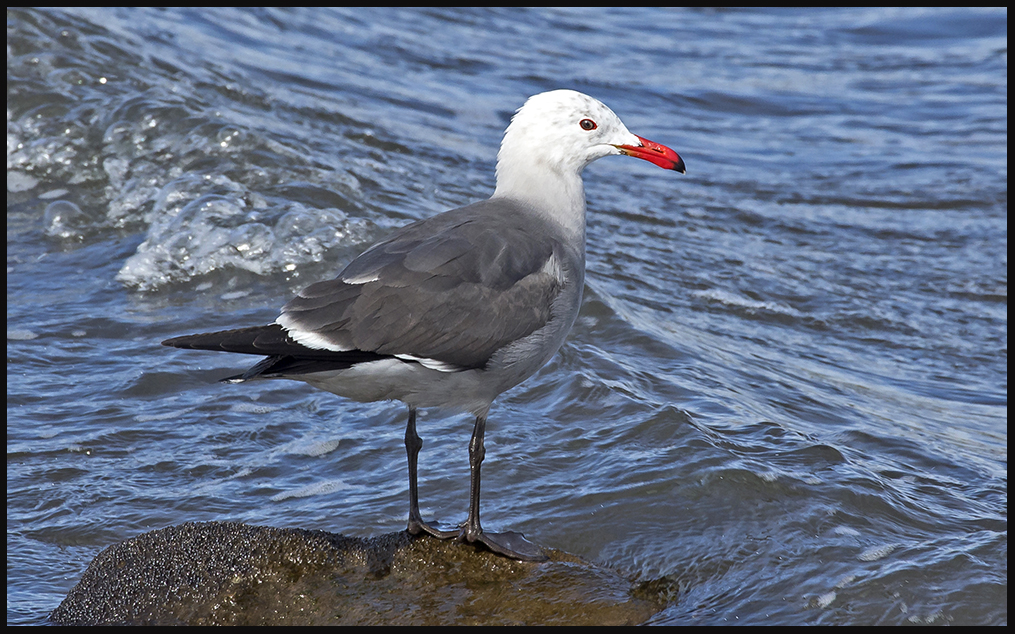
Heermann’s gull
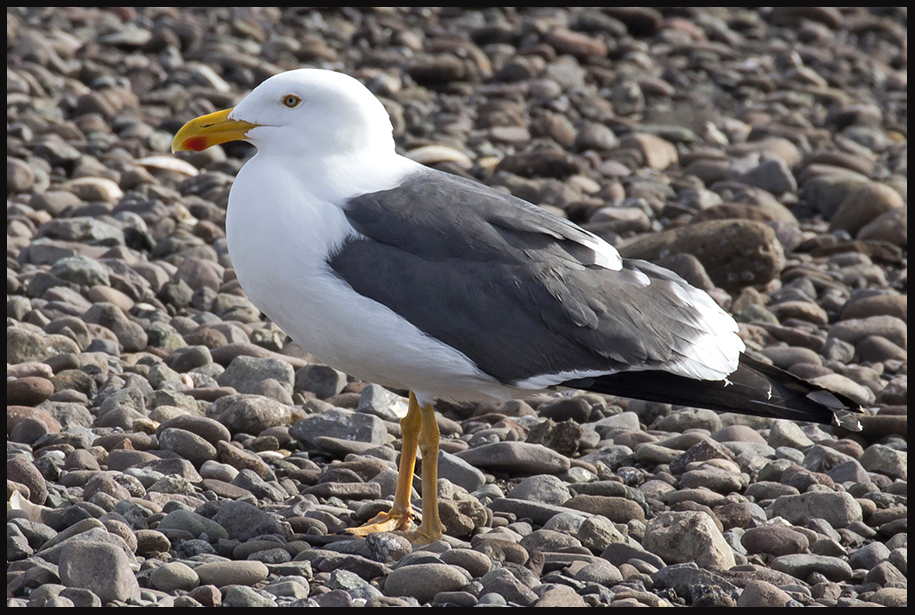
Yellow-footed gull
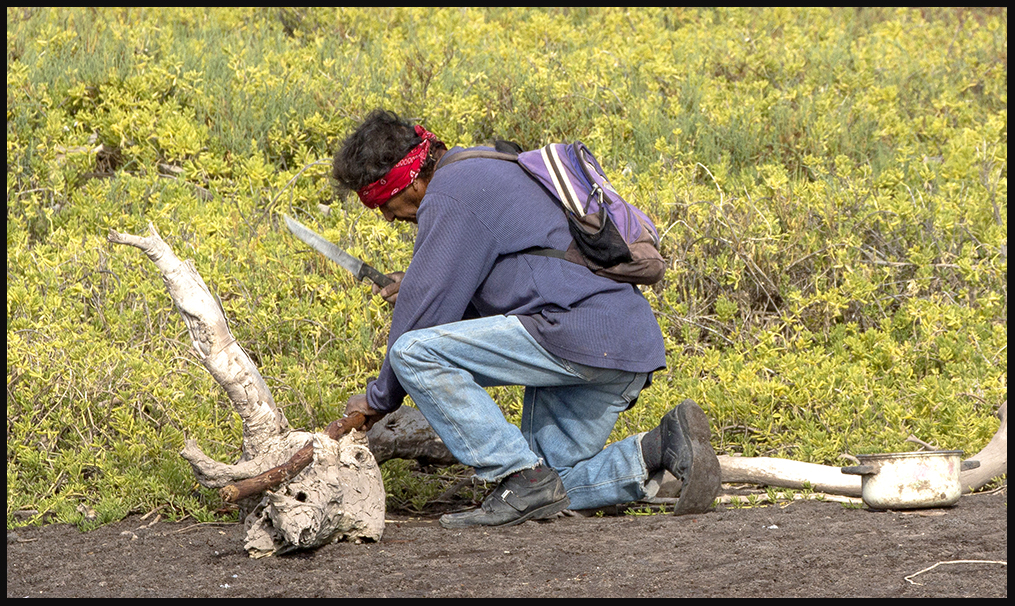
Today, there are only a few people left, in northern Baja, with native blood. The few soldiers left behind by the missionaries were responsible for repopulating the peninsula. It left the peninsula one of the poorest and least populated places for centuries.
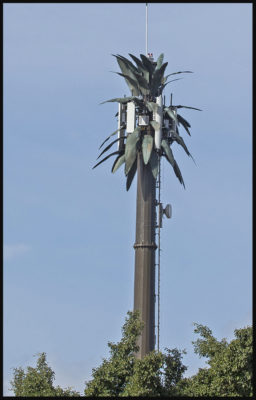
Camo? palm microwave tower
Loreto is now a flourishing city, although a hurricane last year (2016) seems to have put a stop to some big developments along the bay.
After a short drive, 3000’straight up, you’ll find San Javier mission, one of only a few left in their original splendor. Founded in 1699, it took 38 years to complete. A feature at the mission is a 400 year old olive tree… it must have been fairly good size when the padres planted it.
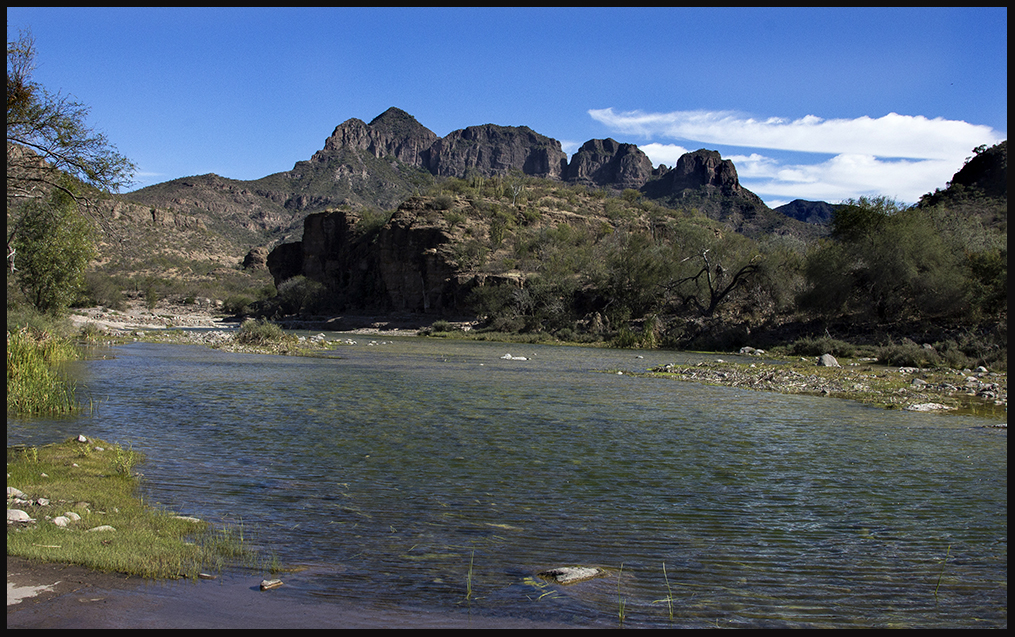
On the drive to the mission we were surprised to find abundant water in the mountains.
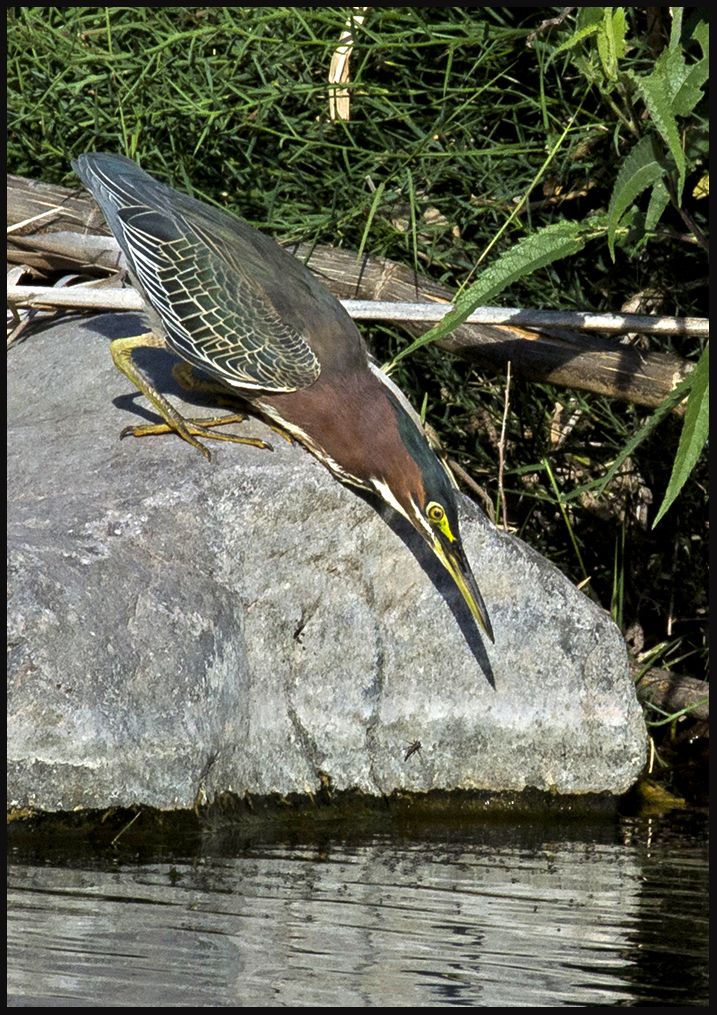
Green heron fishing.
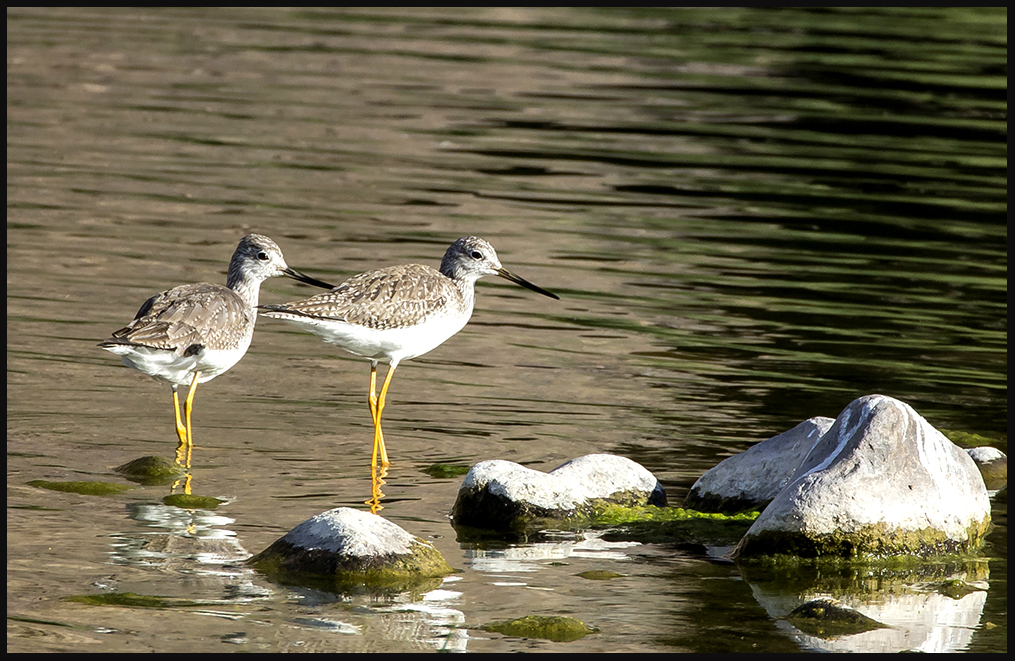
Pair of Lesser Yellowlegs

Misión San Javier in its original splendor.
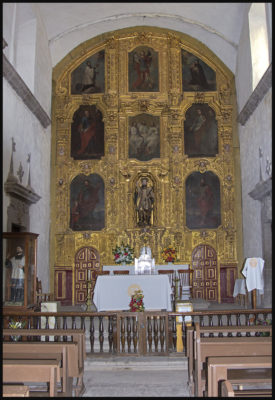
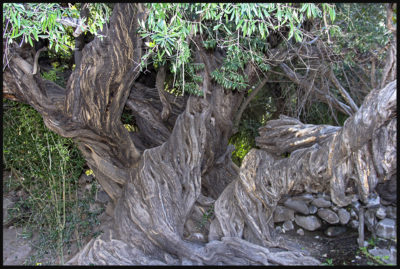
400 year old olive tree
Next we set out to see gray whales in the Magdalena Bay, the most southern of the 3 bays. We chose the little town of Puerto Adolfo Lopez Mateos because the bay is so narrow there, you can see whales from shore. The Mexican government has built a huge facility to handle the whale watching tourists. Unfortunately, good intentions: bad results. At night, banks of bright lights offer nothing but light pollution. Best feature is the sculpture.

Gray whale mother and calf sculpture.
We hired a panga, an outboard motor boat, for $60/hour. For that price the pangeros take up to 6 people. However, few folks were around when we were ready. We spent most of our hour chasing around the bay looking for whales. Obviously, we were there too early (Jan. 26th). A few whales were in the bay, but we only saw them at a distance.
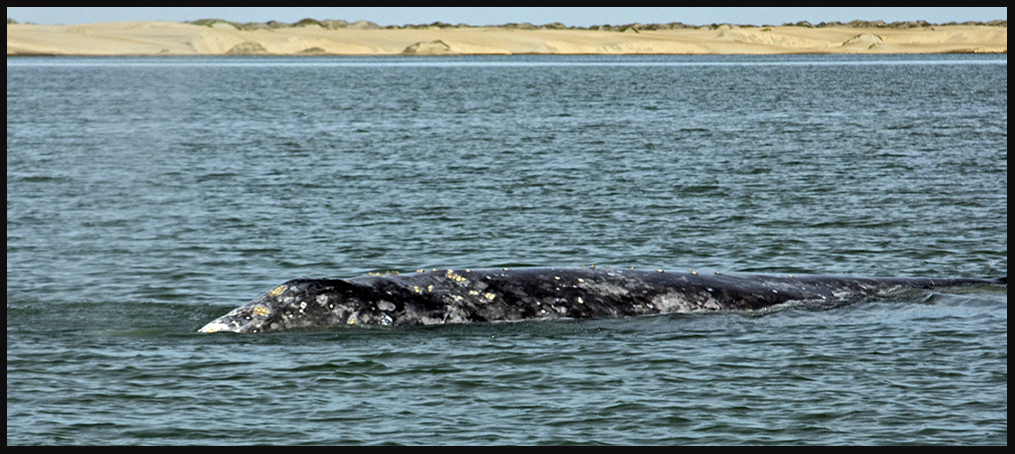
The too-far-away whale.
While whale watching was disappointing, bird watching was improving. There are hundreds (no exaggeration!) of nest boxes for Osprey to keep them off the power lines.

Osprey on nest box.
Whole families of Crested Caracaras are visible along the roadsides. While gorgeous orioles flit about the gardens.
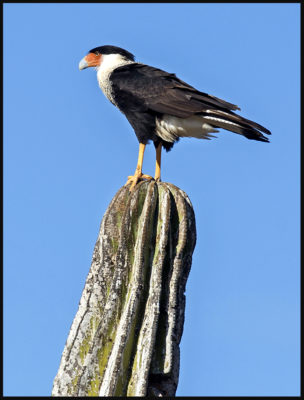
Crested Caracara, one of many around Puerto Mateos.
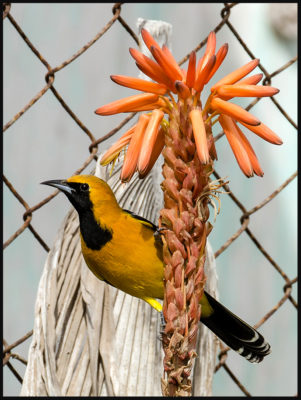
Hooded orioles are common in Baja.
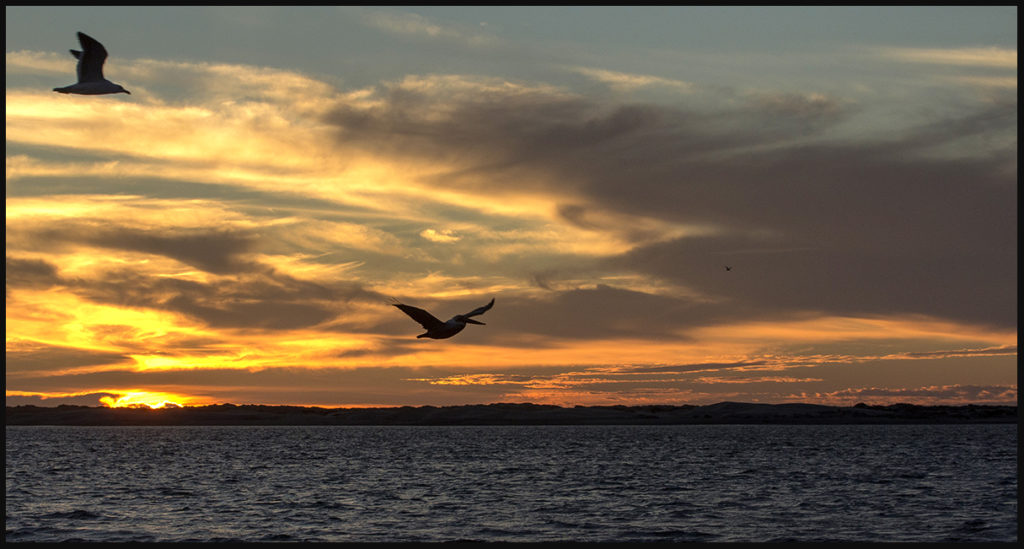
Sunset at Puerto Lopez Mateos. Spectacular sunsets are frequent.
We’ll pick up the whale search later. In chapter three we’ll visit La Paz, the capital of Baja California Sur, and environs.
